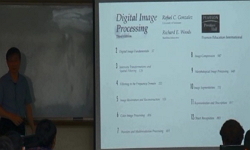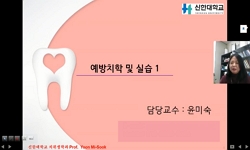Purpose: Contrast, sharpness, enhancement, and density can be changed in digital systems. The important question is to what extent the changes in these variables affect the accuracy of caries detection. Materials and Methods: Forty eight extracted hum...
http://chineseinput.net/에서 pinyin(병음)방식으로 중국어를 변환할 수 있습니다.
변환된 중국어를 복사하여 사용하시면 됩니다.
- 中文 을 입력하시려면 zhongwen을 입력하시고 space를누르시면됩니다.
- 北京 을 입력하시려면 beijing을 입력하시고 space를 누르시면 됩니다.


The effects of noise reduction, sharpening, enhancement, and image magnification on diagnostic accuracy of a photostimulable phosphor system in the detection of non-cavitated approximal dental caries
한글로보기https://www.riss.kr/link?id=A101685501
- 저자
- 발행기관
- 학술지명
- 권호사항
-
발행연도
2015
-
작성언어
English
- 주제어
-
등재정보
SCOPUS,KCI등재,ESCI
-
자료형태
학술저널
- 발행기관 URL
-
수록면
81-87(7쪽)
- 제공처
- 소장기관
-
0
상세조회 -
0
다운로드
부가정보
다국어 초록 (Multilingual Abstract)
Purpose: Contrast, sharpness, enhancement, and density can be changed in digital systems. The important question is to what extent the changes in these variables affect the accuracy of caries detection. Materials and Methods: Forty eight extracted human posterior teeth with healthy or proximal caries surfaces were imaged using a photostimulable phosphor (PSP) sensor. All original images were processed using a six-step method: (1) applying "Sharpening 2" and "Noise Reduction" processing options to the original images; (2) applying the "Magnification 1:3" option to the image obtained in the first step; (3) enhancing the original images by using the "Diagonal/"option; (4) reviewing the changes brought about by the third step of image processing and then, applying "Magnification 1:3"; (5) applying "Sharpening UM" to the original images; and (6) analyzing the changes brought about by the fifth step of image processing, and finally, applying "Magnification 1:3." Three observers evaluated the images. The tooth sections were evaluated histologically as the gold standard. The diagnostic accuracy of the observers was compared using a chi-squared test. Results: The accuracy levels irrespective of the image processing method ranged from weak (18.8%) to intermediate (54.2%), but the highest accuracy was achieved at the sixth image processing step. The overall diagnostic accuracy level showed a statistically significant difference (p=0.0001). Conclusion: This study shows that the application of "Sharpening UM" along with the "Magnification 1:3" processing option improved the diagnostic accuracy and the observer agreement more effectively than the other processing procedures.
동일학술지(권/호) 다른 논문
-
- Korean Academy of Oral and Maxillofacial Radiology
- Lee, Byung-Do
- 2015
- SCOPUS,KCI등재,ESCI
-
- Korean Academy of Oral and Maxillofacial Radiology
- Karaca, Inci Rana
- 2015
- SCOPUS,KCI등재,ESCI
-
- Korean Academy of Oral and Maxillofacial Radiology
- Mehdizadeh, Mojdeh
- 2015
- SCOPUS,KCI등재,ESCI
-
The current approach to the diagnosis of vascular anomalies of the head and neck: A pictorial essay
- Korean Academy of Oral and Maxillofacial Radiology
- Goel, Sinny
- 2015
- SCOPUS,KCI등재,ESCI





 ScienceON
ScienceON




